Cisco Nexus 5672UP switch (N5K-C5672UP) ist ein kompaktes 1HE (1 Rack-Einheit), Hochleistung, 1/10/40-Gigabit-Ethernet mit geringer Latenz, Fibre-Channel, und Fibre Channel über Ethernet (FCoE) schalten. Es läuft mit dem branchenführenden Betriebssystem Cisco NX-OS Software, Bereitstellung von Funktionen und Fähigkeiten, die weit verbreitet sind.
zeigt die Quick Specs.
| Produktcode | N5K-C5672UP |
| Leistung | Schicht 2 Und 3 Hardware-Weiterleitung unter 1.44 Tbit/s; 1071 MPPS (64-Byte-Pakete) |
| Formfaktor | 1-Rack-Einheit |
| Netzteile | zwei 1+1 überflüssig, Hot-Swap-fähige Netzteile |
| Lüftermodule | 3 |
| Luftstrom | Unterstützung beider Backbord-Einlässe (roter Griff) und ventilatorseitiger Ansaugung (blauer Griff) Luftstromoptionen für flexible Montage |
| 10 GE | 48 Häfen |
| 40 GE | 6 echte QSFP-Ports |
| Häfen | 48 Fest 1 Gigabit und 10 Davon Gigabit-Ethernet-Ports 16 Ports können Unified-Ports sein (HOCH) |
| 10 Und 40 Gbit/s FCoE | Ja |
| Hardware-VXLAN | Ja |
| NVGRE-fähig | Ja |
| Latenz | 1 Mikrosekunde |
| Körperlich (Höhe x Breite x Tiefe) | 1.75 X 17.3 X 30 In. (4.4 X 43.9 X 76.2 cm) |
| Gewicht | 32 Pfund (2 Netzteile) |
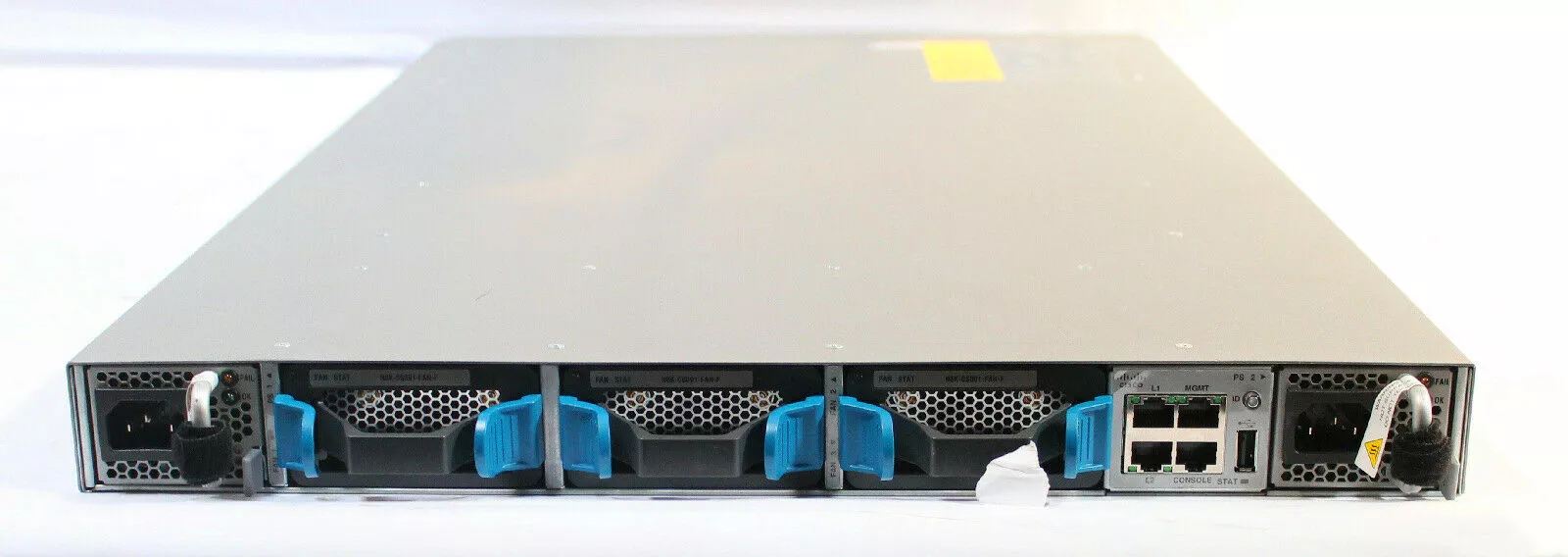
Spezifikation
| N5K-C5672UP Specifications | |
|---|---|
| Formfaktor | 1-Rack-Einheit |
| Anzahl der Ports | Bis zu 1152 mit FEX |
| 10 GE | 48 Häfen |
| 40 GE | 6 echte QSFP-Ports |
| Einheitliche Ports | 16 Häfen (Ethernet; FCoE; 2/4/8-Gigabit-FC) |
| 10 Und 40 Gbit/s FCoE | Ja |
| Hardware-VXLAN | Ja |
| NVGRE-fähig | Ja |
| Latenz | 1 Mikrosekunde |
| Leistung | ● Layer 2 Und 3 Hardware-Weiterleitung unter 1.44 Tbit/s; 1071 MPPS (64-Byte-Pakete) ● Support for up to 256,000 kombinierte Einträge von MAC-Adressen und Address Resolution Protocol (ARP) Einträge ● Low latency of approximately 1 Mikrosekunde mit Cut-Through-Weiterleitung für vorhersehbare Ergebnisse, Konsistente Verkehrslatenz unabhängig von der Paketgröße, Verkehrsmuster, oder aktivierte Funktionen 10 Und 40 Gigabit-Ethernet-Schnittstellen ● 25-MB buffer per 12 X 10 Gigabit-Ethernet-SFP+-Schnittstellen ● Line-rate traffic throughput on all ports in Layer 2 Und 3 Modus |
| Schnittstellen | ● 48 Fest 1/10 Gigabit-Ethernet-SFP+-Ports mit 16 des 48 Häfen werden vereinheitlicht, Und 6 Fest 40 Gigabit-Ethernet-QSFP+-Ports mit 10 Und 40 Gigabit-Ethernet-FCoE-Unterstützung an allen entsprechenden Ports und 2/4/8-Gbit/s-Fibre-Channel an allen einheitlichen Ports ● Expansion module: 24 SFP+ Unified Ports plus 2 X 40 Gigabit-Ethernet-QSFP+-Ports ● Conversion of 40 Gigabit-Ethernet-Ports zu 10 Gigabit-Ethernet-Schnittstellen über QSFP+-Breakout-Kabel ● Fabric extension through the Cisco Nexus 2200 Und 2300 Plattformen |
| Schicht 2 Merkmale | ● Layer 2 Switch-Ports und VLAN-Trunks ● IEEE 802.1Q VLAN encapsulation ● Support for up to 4000 VLANs ● Support for up to 4000 Zugriffskontrollliste (ACL) Einträge ● Rapid Per-VLAN Spanning Tree Plus (PVRST+) (Kompatibel mit IEEE 802.1w) ● Multiple Spanning Tree Protocol (MSTP) (IEEE 802.1s): 64 Instanzen ● Spanning Tree PortFast ● Spanning Tree root guard ● Spanning Tree Bridge Assurance ● Cisco EtherChannel technology (bis zu 16 Ports pro EtherChannel) ● Cisco vPC technology ● vPC configuration synchronization ● vPC shutdown ● Link Aggregation Control Protocol (LACP): IEEE 802.3ad ● Advanced port-channel hashing based on Layer 2, 3, Und 4 Information ● Jumbo frames on all ports (bis zu 9216 Bytes) ● Pause frames (IEEE 802.3x) ● Storm control (Unicast, Multicast, und ausgestrahlt) ● Private VLANs ● Private VLAN over trunks (isoliert und promiskuitiv) ● Private VLANs over vPC and EtherChannels ● VLAN remapping ● FabricPath ● EvPC and vPC+ with FabricPath ● Adapter FEX ● Data Center VM-FEX ● Support for up to 24 Stoffverlängerer (Schicht 2) mit jedem Cisco Nexus 5672UP, 5672UP-16G, und 56128P-Schalter ● RDMA over Converged Ethernet (RoCE) mit Data Center Bridging (DCB) Unterstützung (DCB-Austausch [DCBX] Kein Drop und Prioritätsflusskontrolle [PFC]) |
| Schicht 3 Merkmale | ● Layer 3 Schnittstellen: Geroutete Ports, Virtuelle Schnittstelle wechseln (ALLE), Portkanäle, Subschnittstellen, und Port-Channel-Subschnittstellen ● Support for up to 32,000 IPv4 und 8000 IPv6-Hostpräfixe ● Support for up to 8000 Multicast-Routen (IPv4) ● Support for up to 8000 IGMP-Schnüffelgruppen ● Support for 4000 Virtuelles Routing und Weiterleiten (VRF) Einträge ● Support for up to 4096 VLANs ● Equal-Cost Multipathing (ECMP) bis zu 64 Wege ● 4000 flexible ACL-Einträge ● Routing protocols: Statisch, Routing Information Protocol-Version 2 (RIPv2), Erweitertes Interior Gateway Routing-Protokoll (EIGRP), Öffnen Sie die erste Version des kürzesten Pfads 2 (OSPFv2), Border Gateway Protokoll (BGP), und Zwischensystem-zu-Zwischensystem (IS-IST) ● IPv6 routing protocols: Statisch, OPFv3, BGPv6, und EIGRPv6 ● IPv6 VRF-lite ● BFD support: OSPFv2, BGPv4, EIGRP, und VRF-Instanzen ● Policy-Based Routing (IPv4 und IPv6) ● Hot-Standby Router Protocol (HSRP) und Virtual Router Redundancy Protocol (VRRP) ● IP direct broadcast ● vPC+ routing protocol peering ● ACL: Geroutete ACL mit Layer 3 Und 4 Optionen zur Anpassung der Eingangs- und Ausgangs-ACL ● Multicast: Protokollunabhängige Multicast-Version 2 (PIMv2) Sparse-Modus, Quellenspezifischer Multicast (SSM), Bidir-PIM, Multicast Source Discovery Protocol (MSDP), IGMPv2 und v3, und Multicast-VLAN-Registrierung (MVR) ● VRF: VRF-lite (IP-VPN); VRF-fähiger Unicast; und BGP-, OSPF-, RUHE IN FRIEDEN-, und VRF-fähiges Multicast ● Unicast Reverse-Path Forwarding (uRFP) mit ACL; strenge und lockere Modi ● Jumbo frame support (bis zu 9216 Bytes) ● Support for up to 24 Fabric-Extender auf jedem Cisco Nexus 5600 10-Gbit/s-Plattform-Switch |
| Servicequalität (QoS) | ● Layer 2 IEEE 802.1p (Dienstleistungsklasse [CoS]) ● 8 Unicast-Warteschlangen und 8 Multicast-Warteschlangen pro Port ● Per-port QoS configuration ● CoS trust ● Port-based CoS assignment ● Modular QoS CLI (MQC) Einhaltung: IPv4 und IPv6 ● ACL-based QoS classification (Lagen 2, 3, Und 4) ● Flexible TCAM carving ● MAC and ARP hardware carving ● MQC CoS marking ● Per-port virtual output queuing ● CoS-based egress queuing ● Egress strict-priority queuing ● Egress port-based scheduling: Defizitgewichtetes Round-Robin (WASSER) ● Control-Plane Policing (CoPP): IPv4 und IPv6 |
| Sicherheit | ● Ingress ACLs (Standard und erweitert) auf Ethernet- und virtuellen Ethernet-Ports ● Standard and extended Layer 2 ACLs: MAC-Adressen, Protokolltyp, usw. ● Standard and extended Layer 3 Und 4 ACLs: IPv4 und IPv6, Internet Control Message Protocol (ICMP und ICMPv6), TCP, Benutzer-Datagramm-Protokoll (UDP), usw. ● Ingress policing ● VLAN-based ACLs (VACLs) ● Port-based ACLs (PACLs) ● Named ACLs ● Optimized ACL distribution ● ACLs on virtual terminals (vtys) ● ACL logging (Nur IPv4) ● Dynamic Host Configuration Protocol (DHCP) mit Option herumschnüffeln 82 ● Dynamic ARP Inspection ● IP source guard ● DHCP relay (bis zu 32 Reiseziele) ● Ethernet port security ● IPv6 RACL, PACL, und VACL ● iSCSI type-length-value (TLV) |
| Hochverfügbarkeitsfunktionen | ● Cisco In-Service Software Upgrade (ISSU) für Ebene 2 ● Hot-swappable field-replaceable power supplies and fan modules ● N+1 and N+N power redundancy ● N+1 fan module redundancy |
| Management | ● Switch management using 10/100/1000-Mbps management or console ports ● CLI-based console to provide detailed out-of-band management ● In-band switch management ● Port-based locator and beacon LEDs ● Configuration synchronization ● Configuration rollback ● Secure Shell Version 2 (SSHv2) ● Telnet ● Authentication, Genehmigung, und Buchhaltung (AAA) ● AAA with RBAC ● RADIUS ● TACACS+ ● Syslog (8 Server) ● Embedded packet analyzer ● SNMPv1, v2, und v3 (IPv4 und IPv6) ● Enhanced SNMP MIB support ● XML (NETCONF) Unterstützung ● Remote monitoring (RMON) ● Advanced Encryption Standard (AES) für den Verwaltungsverkehr ● Unified username and passwords across CLI and SNMP ● Microsoft Challenge Handshake Authentication Protocol (MS-CHAP) ● Digital certificates for management between switch and RADIUS server ● Cisco Discovery Protocol Versions 1 Und 2 ● RBAC ● SPAN on physical, PortChannel und VLAN ● ERSPAN ● Ingress and egress packet counters per interface ● Network Time Protocol (NTP) ● Cisco Generic Online Diagnostics (GOLD) ● Comprehensive bootup diagnostic tests ● Cisco Embedded Event Manager (EEM) ● Cisco Call Home ● Cisco Smart Call Home ● Default Interface ● Cisco Fabric Manager ● Cisco Prime DCNM ● CiscoWorks LAN Management Solution (LMS) |
| Überbrückung von Rechenzentren | ● CEE- und IEEE-konformer PFC (Unterstützung für Pausenrahmen pro Priorität: IEEE 802.1Qbb) ● PFC link distance support: 20 km ● CEE-compliant DCBX Protocol ● CEE- und IEEE-konforme erweiterte Übertragungsauswahl |
| FCoE-Funktionen (Erfordern eine Storage Services-Lizenz) | ● T11 standards-compliant FCoE (Fibre Channel-BB-5) ● T11 FCoE Initialization Protocol (FIP) (Fibre Channel-BB-5) ● Any 10 oder 40 Gigabit-Ethernet-Port konfigurierbar als FCoE ● SAN administration separate from LAN administration ● Fibre Channel forwarding (FCF) ● Fibre Channel enhanced port types: VE, VF und VNP ● Direct attachment of FCoE targets ● Fabric Device Management Interface (FDMI) ● Fibre Channel ID (FCID) Beharrlichkeit ● Distributed device alias services ● In-order delivery ● Port tracking ● Cisco FCoE NPV technology ● N-port identifier virtualization (Kapitalwert) ● Fabric services: Name Server, registrierte Statusänderungsbenachrichtigung (RSCN), Anmeldedienste, und Nameserver-Zonierung ● Per-VSAN fabric services ● Cisco Fabric Services ● Distributed device alias services ● Host-to-switch and switch-to-switch Fibre Channel-SP authentication ● Fabric Shortest Path First (FSPF) ● Standard zoning ● Enhanced zoning ● Cisco Fabric Analyzer ● Cisco DCNM-SAN ● Storage Management Initiative Specification (SMI-S) ● Boot from SAN over vPC and Enhanced vPC (EvPC) ● FCP ● VSAN trunking ● Fabric Device Management Interface (FDMI) ● Fibre Channel ID (FCID) Beharrlichkeit ● Distributed device alias services ● In-order delivery ● Port tracking ● Cisco NPV technology ● Fabric binding for Fibre Channel ● Port security ● Fibre Channel traceroute ● Fibre Channel ping ● Fibre Channel debugging |
| SNMP-MIBs | |
| Generische MIBs | ● SNMPv2-SMI ● CISCO-SMI ● SNMPv2-TM ● SNMPv2-TC ● IANA-ADDRESS-FAMILY-NUMBERS-MIB ● IANAifType-MIB ● IANAiprouteprotocol-MIB ● HCNUM-TC ● CISCO-TC ● SNMPv2-MIB ● SNMP-COMMUNITY-MIB ● SNMP-FRAMEWORK-MIB ● SNMP-NOTIFICATION-MIB ● SNMP-TARGET-MIB ● SNMP-USER-BASED-SM-MIB ● SNMP-VIEW-BASED-ACM-MIB ● CISCO-SNMP-VACM-EXT-MIB |
| Schicht 3 MIBs | ● UDP-MIB ● TCP-MIB ● OSPF-MIB ● BGP4-MIB ● CISCO-HSRP-MIB |
| Ethernet-MIBs | ● CISCO-VLAN-MEMBERSHIP-MIB ● CISCO-Virtual-Interface-MIB ● CISCO-VTP-MIB |
| Konfigurations-MIBs | ● ENTITY-MIB ● IF-MIB ● CISCO-ENTITY-EXT-MIB ● CISCO-ENTITY-FRU-CONTROL-MIB ● CISCO-ENTITY-SENSOR-MIB ● CISCO-FLASH-MIB ● CISCO-SYSTEM-MIB ● CISCO-SYSTEM-EXT-MIB ● CISCO-IP-IF-MIB ● CISCO-IF-EXTENSION-MIB ● CISCO-SERVER-INTERFACE-MIB ● CISCO-NTP-MIB ● CISCO-IMAGE-MIB ● CISCO-IMAGE-CHECK-MIB ● CISCO-IMAGE-UPGRADE-MIB ● CISCO-CONFIG-COPY-MIB ● CISCO-ENTITY-VENDORTYPE-OID-MIB ● CISCO-BRIDGE-MIB |
| Überwachung von MIBs | ● DIFFSERV-DSCP-TC ● NOTIFICATION-LOG-MIB ● DIFFSERV-MIB ● CISCO-CALLHOME-MIB ● CISCO-SYSLOG-EXT-MIB ● CISCO-PROCESS-MIB ● RMON-MIB ● CISCO-RMON-CONFIG-MIB ● CISCO-HC-ALARM-MIB ● LLDP-MIB |
| Sicherheits-MIBs | ● CISCO-AAA-SERVER-MIB ● CISCO-AAA-SERVER-EXT-MIB ● CISCO-COMMON-ROLES-MIB ● CISCO-COMMON-MGMT-MIB ● CISCO-RADIUS-MIB ● CISCO-SECURE-SHELL-MIB ● TCP/IP MIBs ● INET-ADDRESS-MIB ● TCP-MIB ● CISCO-TCP-MIB ● UDP-MIB ● IP-MIB ● CISCO-IP-PROTOCOL-FILTER-MIB ● CISCO-DNS-CLIENT-MIB ● CISCO-PORTSECURITY-MIB |
| Verschiedene MIBs | ● START-MIB ● CISCO-LICENSE-MGR-MIB ● CISCO-FEATURE-CONTROL-MIB ● CISCO-CDP-MIB ● CISCO-RF-MIB ● CISCO-ETHERNET-FABRIC-EXTENDER-MIB ● CISCO-BRIDGE-MIB ● CISCO-FCOE-MIB ● CISCO-PORTCHANNEL-MIB ● CISCO-ZS-MIB |
| Standards | |
| Industry Standards | ● IEEE 802.1D: Spanning Tree-Protokoll ● IEEE 802.1p: CoS prioritization ● IEEE 802.1Q: VLAN tagging ● IEEE 802.1Qaz: Enhanced transmission selection ● IEEE 802.1Qbb: Per-priority Pause ● IEEE 802.1s: Multiple VLAN instances of Spanning Tree Protocol ● IEEE 802.1w: Rapid reconfiguration of Spanning Tree Protocol ● IEEE 802.3: Ethernet ● IEEE 802.3ad: LACP with fast timers ● IEEE 802.3ae: 10 Gigabit Ethernet ● IEEE 802.3ba: 40 Gigabit Ethernet (Applies to 40G SR4, SR4-S, LR4, LR4-S, and CSR4 optics only) ● SFF 8431 SFP+ CX1 support ● RMON |
Verpackungsinformationen
Cisco Nexus 5000 Series N5K-C5672UP is sealed in cisco original box. We will also pack N5K-C5672UP with the second box before shipping.

Sendung
Unsere Produkte werden per FedEx versendet,DHL,TNT,UPS,EMS,und so weiter. aber der käufer ist verantwortlich für
Zollabfertigung und Zahlung des Tarifs, wenn das Produkt im Zielland ankommt.
Versandarten
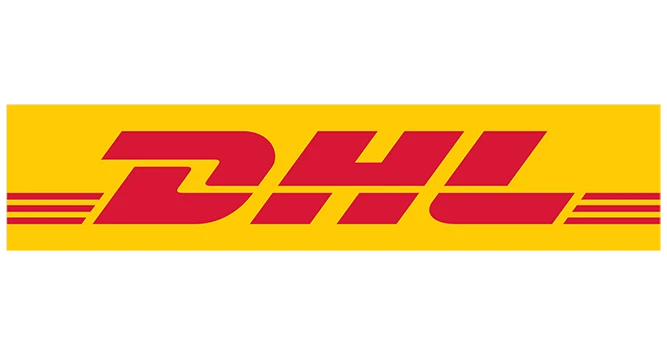
2-4 Arbeitstage
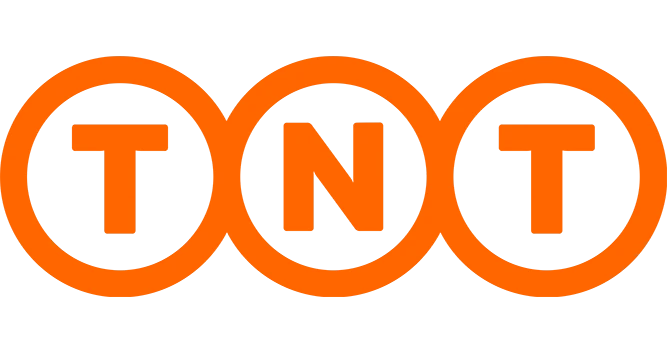
2-4 Arbeitstage
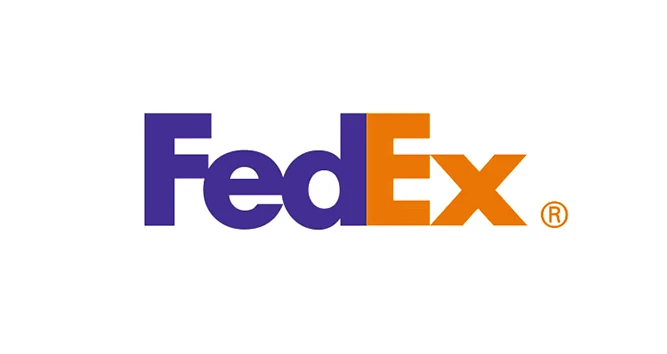
2-4 Arbeitstage
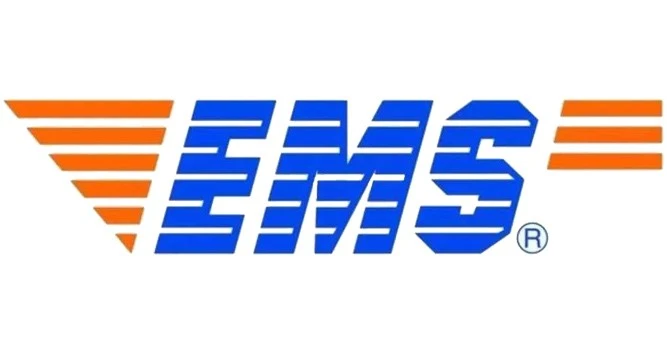

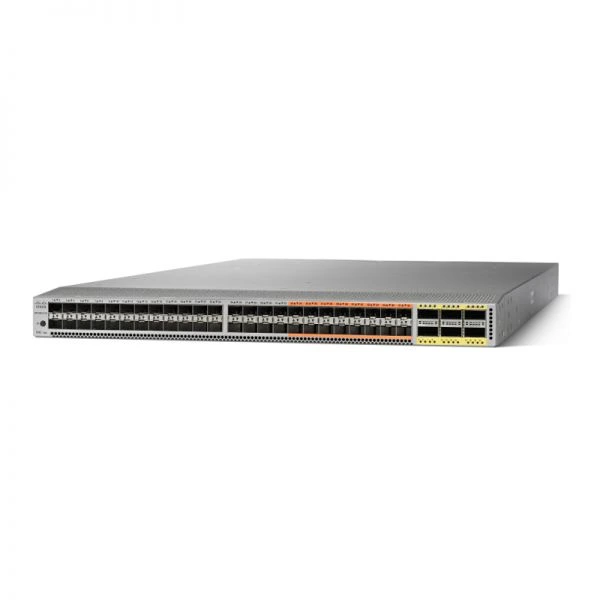

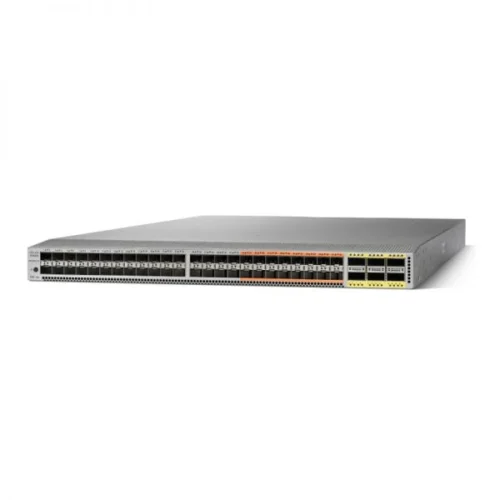
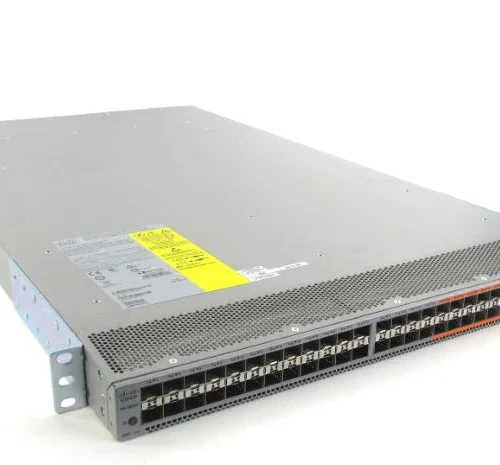

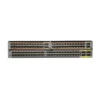





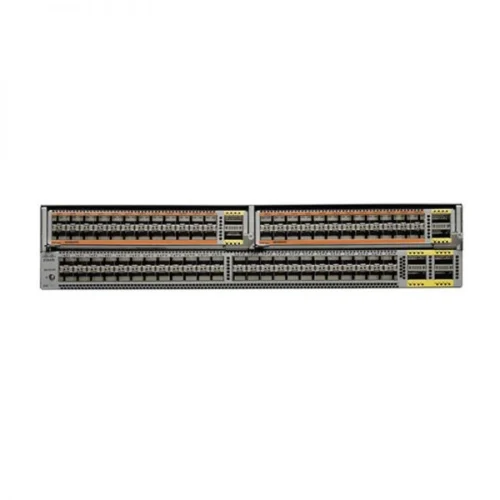
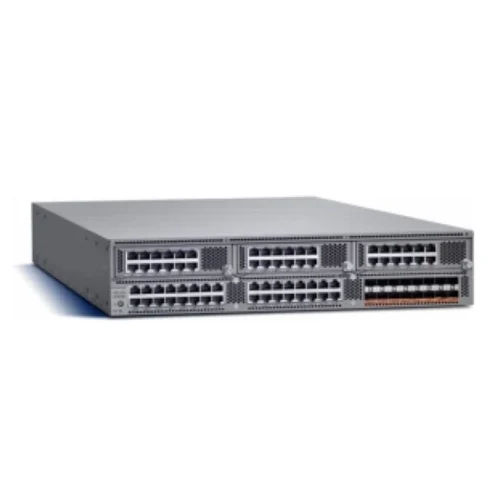



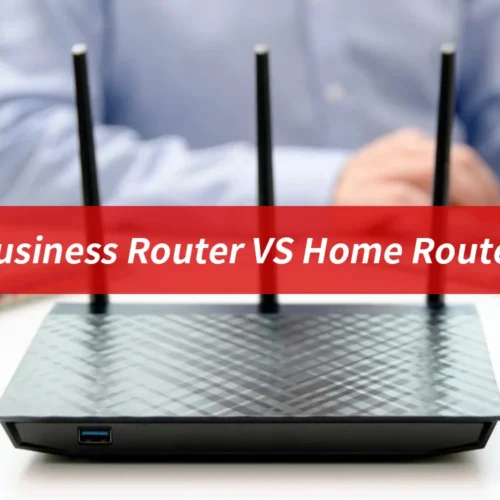
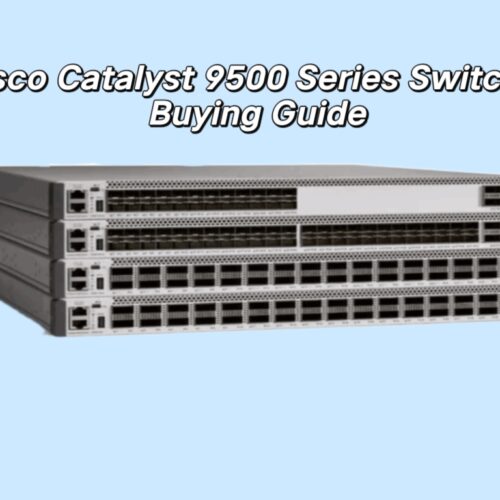


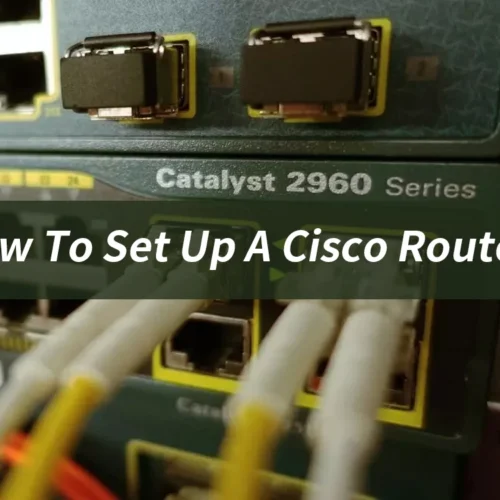
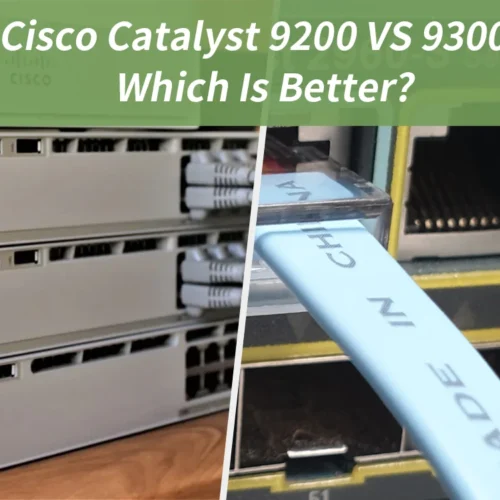
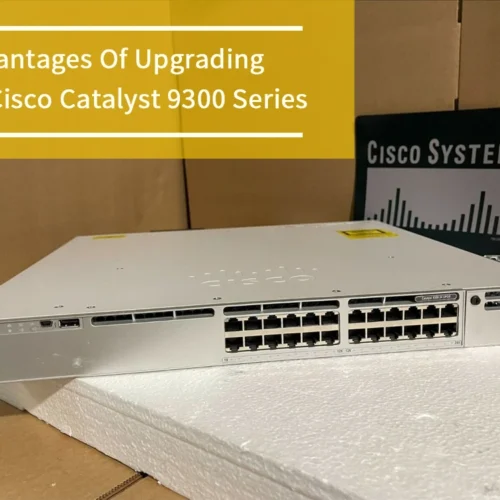



Bewertungen
Es gibt noch keine Bewertungen.